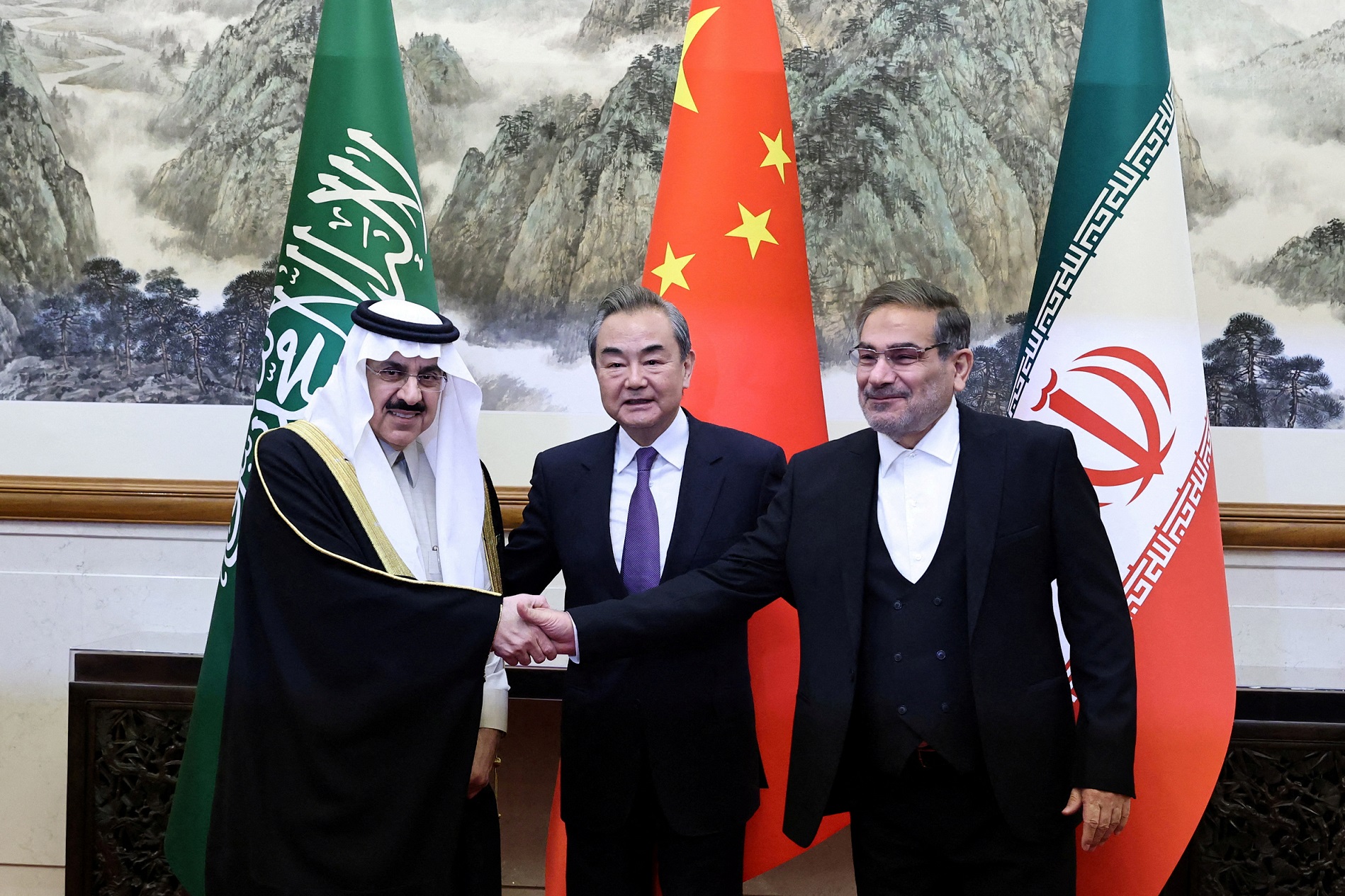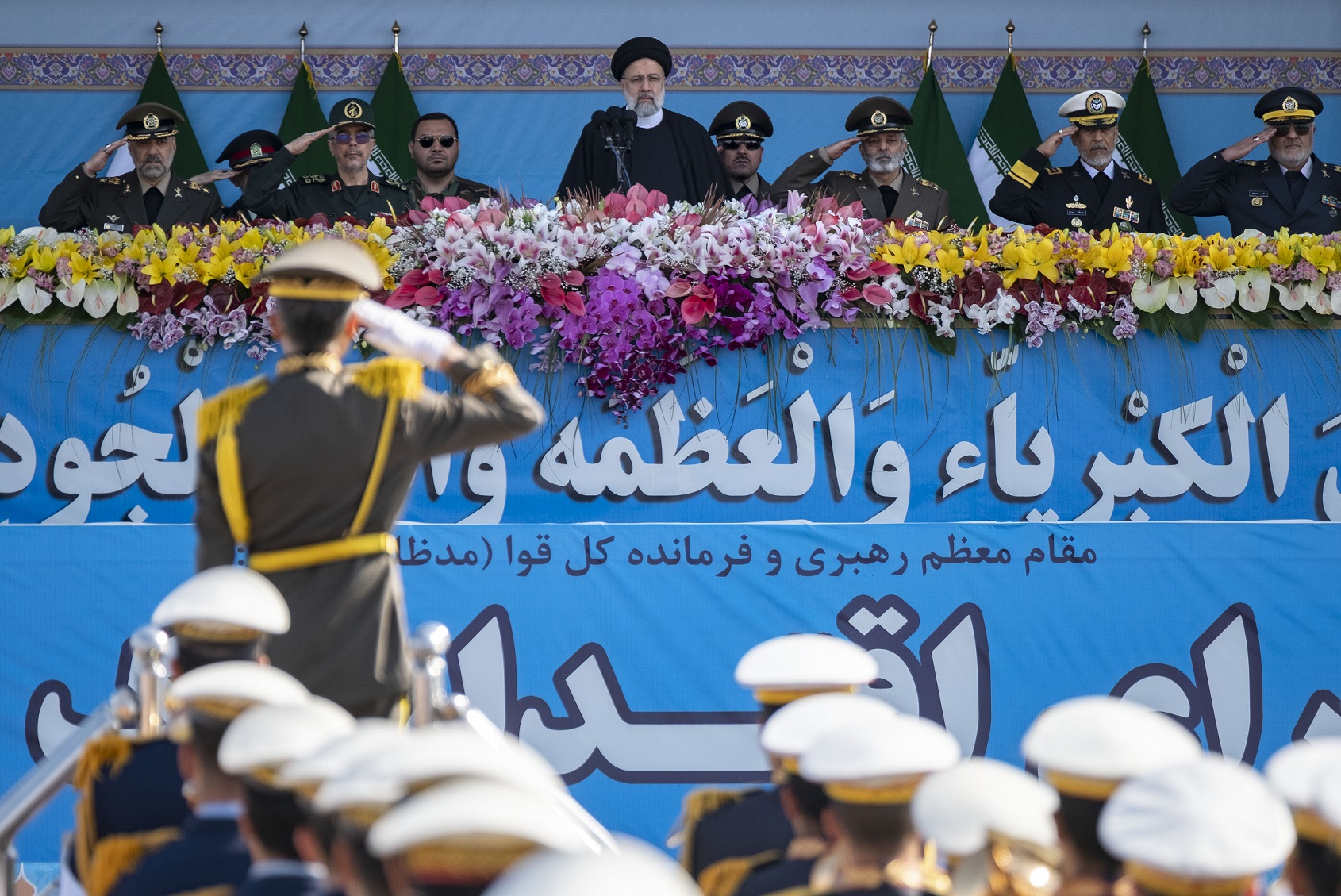Publications
INSS Insight No. 1711, April 24, 2023
Iran is currently focusing on two conflicting regional processes. On the one hand, it is gradually improving its relations with Arab countries, with special emphasis on the Gulf states, primarily Saudi Arabia. On the other hand, there is a sharpening conflict between the so-called axis of resistance, backed by Iran, and Israel. While it is clear that the initiative for the most recent round of escalation on Israel’s northern and southern borders was not directly linked to Iran, but rather to developments on the Palestinian front, especially the tensions on the Temple Mount, there is no doubt that Iran is leveraging the increased coordination between the various members of the axis of resistance and the multi-front escalation to intensify pressure on Israel. Tehran may see the alleviating of tensions between Iran and Arab countries as an opportunity to intensify its efforts to counter Israeli activities and strengthen its strategic deterrence.
Over the past few months, and with even greater intensity in recent weeks, Iran has been promoting its bilateral ties with Sunni Arab states, particularly the Gulf states. The renewal of relations with Saudi Arabia, brokered by China last month, is especially noteworthy in this context. Shortly after the announcement of the agreement, the foreign ministers of the two countries held a summit in Beijing. As a result, the Iranian President has been invited to visit Riyadh at a future date, and technical teams from both countries have made reciprocal visits to lay the groundwork for the reopening of diplomatic missions. In addition, Oman has resumed mediated talks between a delegation from Riyadh and the Houthi rebels in Yemen, with the hope of reaching an agreement to end the years-long Saudi offensive in Yemen. Meanwhile, Iran is also engaged in working talks with Bahrain, and a resumption of diplomatic ties between the two countries appears likely. Once that happens, Iran will have renewed ties with all Gulf states.

The trend of improved ties between Iran and the Arab world is not limited to the Gulf states. In recent months, Iran has reportedly sought to improve relations with Egypt and Jordan, which have maintained a fairly low level for several years. Following the announcement of the agreement between Iran and Saudi Arabia, Iran's Foreign Ministry spokesman, Nasser Kanaani, declared that this would also have positive implications for the Islamic Republic’s ties with Egypt, Jordan, and Bahrain. Iranian Foreign Minister Hossein Amir-Abdollahian likewise declared that a significant breakthrough was imminent in his country’s relations with Egypt and Jordan, as part of efforts by the government of President Ebrahim Raisi to reduce regional tensions. In December 2022, Abdollahian met with Jordan’s King Abdullah and Egyptian President Abdel Fattah el-Sisi on the sidelines of an international conference on Iraq that was held in Amman. Reports from the Arab world also suggest that Iraq is involved in mediation efforts between Iran, Egypt, and Jordan. In early April, Reuters reported, based on claims from within the Egyptian Tourism Ministry, that Cairo would soon allow organized groups of Iranian tourists to obtain visas to visit Sinai and, at a later stage, be allowed access to more parts of the country. Jordan and Egypt welcomed the agreement between Iran and Saudi Arabia, expressing the hope that it would contribute to increased security and stability across the region.
Against the backdrop of eased tensions between Iran and the Arab states, there has also been a marked escalation in the ongoing conflict between the Islamic Republic and Israel, especially given the intensive Israeli airstrikes in Syria in response to the terror attack at Megiddo Junction on March 13, 2023. Two officers from the Iranian Revolutionary Guards Corps were killed in an airstrike on the night between March 30 and 31, an attack attributed to Israel. In response, Iran threatened revenge, and in a letter to the secretary general of the United Nations, Iran’s permanent representative to the UN stressed that Iranian forces in Syria are there at the express invitation of the Damascus regime, which gives Tehran the right to protect them. He added that Iran has no intention of removing those forces from Syria. On April 2, the IDF downed an Iranian drone that had penetrated Israeli airspace from Syria. Nonetheless, the drone launch from Syria is presumably not a sufficient response for Tehran. Also relevant in this context are the warnings that Washington issued to vessels in the Arabian Sea and the Gulf of Oman, and the decision to announce publicly the deployment of the USS Florida, a nuclear submarine, to the Persian Gulf.
In tandem, the security escalation in Israel around the Temple Mount and the attacks from Lebanon and Syria were met with great satisfaction in Iran. Israel’s responses in the Gaza Strip and Lebanon were portrayed by the state-controlled media in Iran as evidence of its future inability to deal with simultaneous rocket attacks on several fronts, especially considering the internal political crisis in the country. For example, the hardline daily Vatan-e Emrooz praised the success of the “Palestinian resistance” in initiating conflict with Israel on multiple fronts and stressed that the operational and media solidarity expressed within the axis of resistance at a sensitive time when Israel was celebrating the Passover holiday, has created a new equation that arouses fear among Israelis. The Tasnim News Agency affiliated with the Revolutionary Guards argued that the behavior of the government of Prime Minister Benjamin Netanyahu and the Israeli security forces during the escalation proves that Israel is concerned with the possibility of a confrontation on even two fronts simultaneously. It added that Israel is concerned that other members of the axis of resistance would join a multi-front war, which could lead to its destruction. Revolutionary Guards spokesman Brig. Gen. Ramazan Sharif also spoke about this in a press conference to mark the Global Jerusalem Day on April 14, saying that the formation of “unified anti-Zionist front from south Lebanon and the Golan Heights to Gaza and the West Bank” creates a huge challenge for Israel within a short period of time, especially given its ongoing political crisis.
In addition, Iranian President Raisi spoke by phone with the leaders of Syria, Turkey, Algeria, and Turkmenistan, stressing to them the importance of a joint front against Israel for the liberation of Palestine. In his conversation with Turkish President Recep Tayyip Erdoğan, Raisi called for an emergency meeting of the Organization of Islamic Cooperation to discuss a response to Israeli measures on the Temple Mount. His conversation with Syrian President Bashar Assad took on extra significance in light of the recent spate of attacks on Syrian soil, as well as the launching of three rockets from southern Lebanon into Israel on April 8, apparently by Palestinian organizations. Raisi told Assad that the world order is changing to the advantage of the “axis of resistance,” and that “the crimes of the Zionist regime” are indicative of its weakness and despair, as well as the golden future that awaits the “forces of resistance.” The visit to Syria on April 8 by Esmail Qaani, the commander of the Revolutionary Guards’ Quds Force, was also designed to strengthen the Syrian president and improve coordination between the countries, given increasing reports about Iran providing aerial defense systems to Syria.
The series of incidents comprising the recent escalation on Israel’s borders, with the Temple Mount at the center and Hamas exacerbating the situation in Gaza, Lebanon, and the Golan Heights, and following Israeli strikes in Syria against Iranian targets, raises the question as to what extent the various moves on the different fronts have been coordinated between members of the axis of resistance, with the focus on Hezbollah and Iran.
In recent years, Iran has made increased efforts to improve its strategic capabilities vis-à-vis Israel, including with its regional proxies, to achieve an improved response to Israel’s heightened activities against Iranian targets in Syria and in Iran itself. Notwithstanding Israeli attacks, Iran continues to deliver weapons and ammunition to Syria and Hezbollah via various routes. Recently, it even used convoys carrying humanitarian aid to Syria following the earthquake that struck the country in February. Similarly, Iran continues to strengthen and arm the pro-Iranian militias operating in Syria and on the Syria-Iraq border, and it has also intensified its involvement on the Palestinian front in general and in the West Bank in particular. All this is designed to increase coordination between members of the axis of resistance. Hezbollah and its secretary general Hassan Nasrallah play a central role in this campaign, given their many years of experience and familiarity with Israel and because of the organization’s status and influence in Tehran, which have increased significantly since the assassination of Qasem Soleimani in January 2020. Iran’s modus operandi – using regional proxies – provides Tehran with immunity and deniability, while maintaining its influence and increasing the strength of its regional allies by providing them with weapons, ammunition, and technology, including the ability to manufacture their own arms.
Moreover, even if it is clear that the initiative for the most recent round of escalation is not directly linked to Iran, but to developments on the Palestinian front, primarily on the Temple Mount, based on previous, longstanding coordination between members of the axis of resistance, Iran and its proxies are taking full advantage of the situation, which they see as an opportunity to establish a new balance of deterrence with Israel. The recent visits by Hamas political chief Ismail Haniyeh and the secretary general of Palestinian Islamic Jihad, Ziyad al-Nakhalah, in Beirut for meetings with Nasrallah – as well as the visit to Damascus, and possibly also Beirut, of the commander of the Quds Force – are relevant here. Even if these incidents were not the outcome of Iranian coordination and were not orchestrated by Tehran, they are a welcome development as far as the Islamic Republic is concerned, which could allow it to expand any future confrontation with Israel into a difficult, challenging multi-front confrontation. This Iranian assessment could bolster Tehran’s confidence that it can deal more successfully with a war against Israel and could add to the willingness of the Iranians and their proxies to adopt a more aggressive approach toward Israel – which, they believe, is not interested in an all-out war at the current time.
The bottom line is that while Iran works to improve its relations with Arab countries, especially in the Gulf, there has been a marked and ongoing escalation in tension between Israel and Iran and its partners in the axis of resistance, and at the same time, increased coordination between members of the axis. This coordination was already evident during Operation Guardian of the Walls in May 2021, when a joint command room was established in Beirut for Iran, Hezbollah, Hamas, and Palestinian Islamic Jihad.
Israel must take into account that as far as Tehran is concerned, the axis of resistance in its widest sense and in the context of a comprehensive regional conflagration also includes the pro-Iranian militias in Iraq and the Houthis in Yemen, who have advanced military capabilities. It is perhaps the very easing of tensions between Iran and its Arab neighbors that will provide Tehran with an opportunity to improve its capabilities vis-à-vis Israel and upgrade its strategic deterrence.



